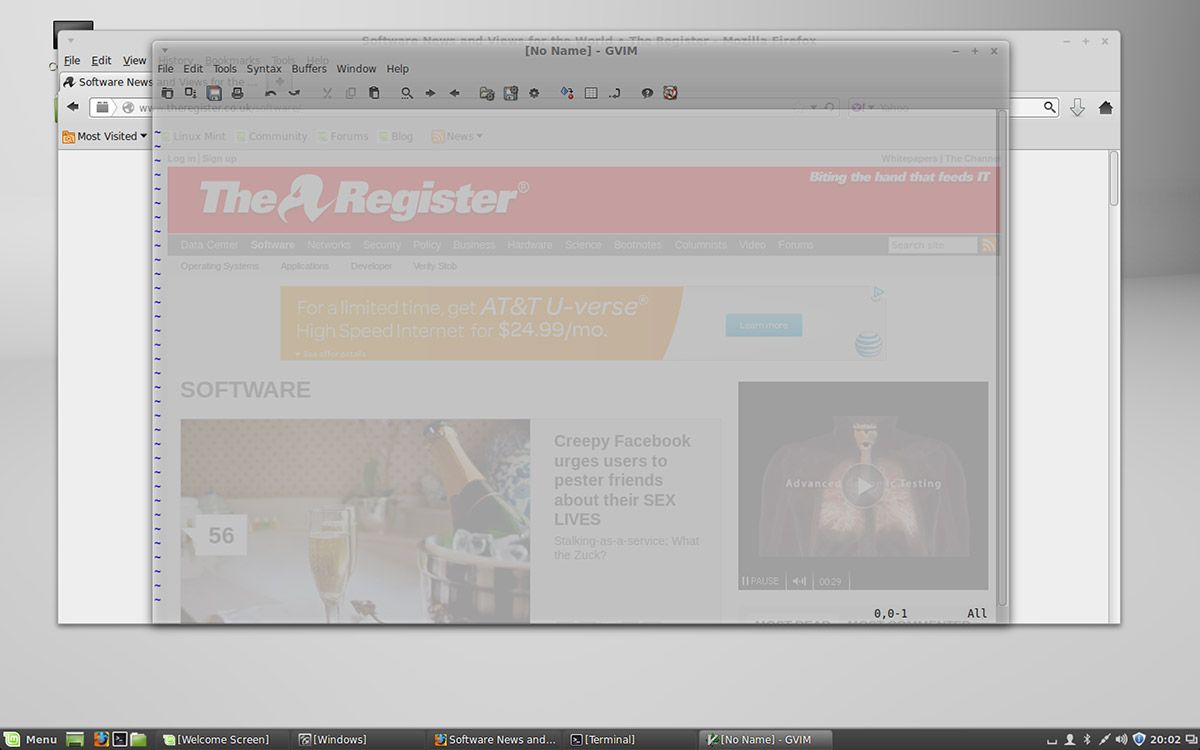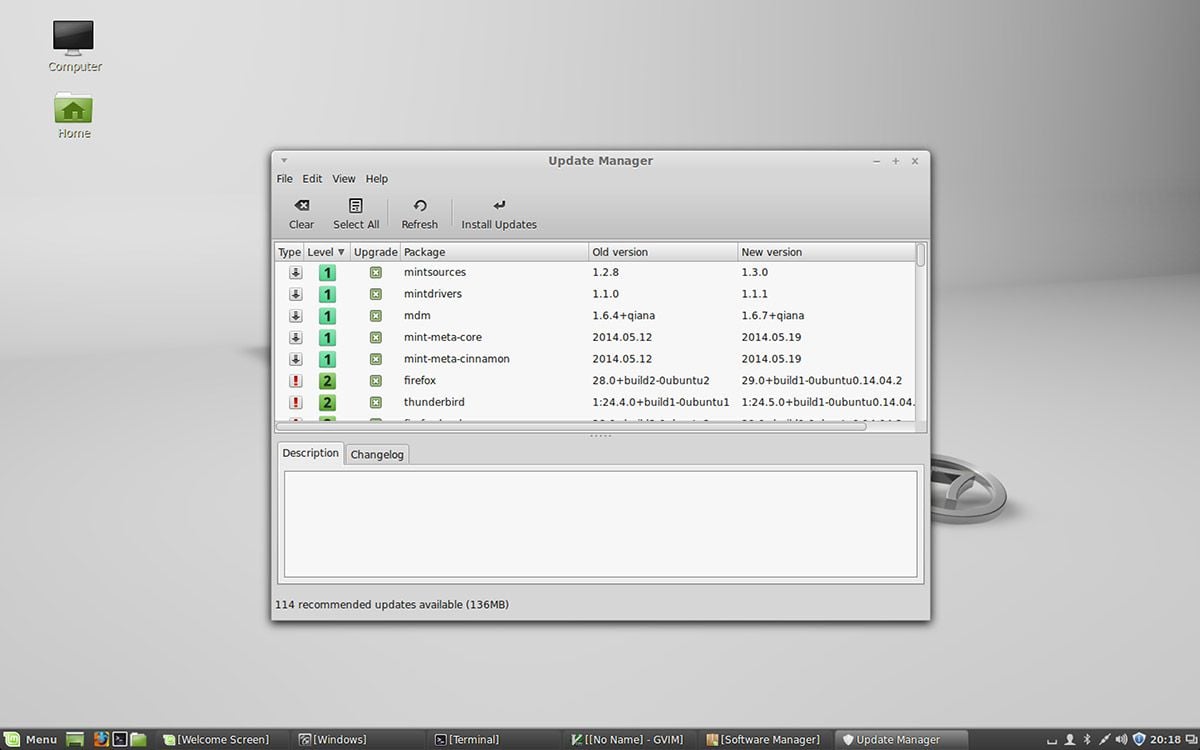Original URL: https://www.theregister.com/2014/06/02/mint_17_review/
The fresh Mint of dwell there: This is a story all about how 17 is here for a while
Clinging to Ubuntu 14.04 LTS... Cinnamon and her MATE
Posted in OSes, 2nd June 2014 10:32 GMT
Get used to Mint 17, the latest release of this popular Linux distro. All versions of Mint until 2016 will use exactly the same base as this version, released on Saturday, 31 May.
“The [Mint] development team won't start working on a new base and will be fully focused on this one," according to the Mint page here.
The reason Mint 18, 19 and 20 won’t alter much? Mint 17 uses the Ubuntu 14.04 Long Term Support (LTS) as its base – Mint is based on Canonical’s distro.
The decision to stick on 14.04 and Mint 17 is good news because it means easier upgrades.
Part of the reason for the move to stick with 14.04 is that there are some major changes coming in Ubuntu (from which Mint is derived) that will likely mean some bumpy transitions are coming for downstream projects.
The decision to stick with 14.04 will also allow Mint, in the words of Mint lead Clem Lefebvre, "to push innovation on Cinnamon, be more active in the development of MATE, better support Mint tools and engage in projects we've postponed for years... and to have our hands freed to do exciting stuff."
The good news is that Mint 17 isn't just another update to an increasingly popular Linux distro - some would claim the most popular distro.
The really good news is that Mint 17 is a great release on which Mint can build a solid base. Of course it remains to be seen whether Mint can get the software updates and backports that users might want and need while remaining with the LTS base. In the mean time though, Mint 17 is off to a great start.
You'll get Mint 17 in two different flavours, both of which feature the project's homegrown desktop environments - MATE and Cinnamon.
The biggest change in this release for fans of the Cinnamon desktop is the arrival of Cinnamon 2.2, which brings with it a more tightly integrated settings panel, improved hot corners and support for Hi-DPI screens.
Cinnamon 2.2 in Mint 17 is a top-tier desktop every bit as stable and reliable as anything from the older KDE, GNOME and Unity camps. This is a remarkable achievement considering just a couple of years ago Mint was nothing more than a Shell Extension for GNOME. Even after that, for many of the early Mint releases I always made sure I had a Bash shortcut to restart Cinnamon because it crashed so often.
Thankfully that's no longer the case. Cinnamon 2.2 was rock solid in my tests, without a single crash. This release makes a great alternative desktop for those who prefer a more traditional workspace with familiar elements like a task bar and start menu.
In this release the Mint team has cleaned up some of the loose ends around the transition away from GNOME, like the revamped settings panel. Now that all the GNOME settings are long gone, the Mint team has turned its attention to its own settings panel, which looks much cleaner and is better organised in this release. Some elements within the panel have been rearranged as well so that, for instance, it's easier to figure out what the various options for power management do.
There have also been some changes to Cinnamon's hot corners and window snapping features. The HUD overlays that let you know a window is about to snap is less intrusive by default. You now have to get much closer to the edge before it shows up. The top left hot corner has been disabled by default in this release because, according the developers, it was often triggered by accident by people who weren't familiar with it.
Hidden features
The new Hi-DPI monitor support worked as advertised in a virtual machine on my MacBook and puts Mint on par with GNOME Shell when it comes to supporting high-res monitors.
There are a couple of not-so-obvious new changes to the window manager that deserve mention. These include the option to control what happens when the mouse scroll wheel moves on a window title bar. You can either have it shade and unshade the window or fade the opacity. Both make for a great fast way to see what's under your window without actually changing apps or using alt-tab.
Cinnamon 2.2 is undoubtedly the flashier and more sophisticated of Mint's two desktop options, but its sibling MATE is definitely worth a look if you miss the days of GNOME 2. MATE began life as an attempt to keep the GNOME 2 style desktop alive and it continues to look the part.
Mint 17's MATE edition ships with MATE 1.8, which offers a number of small improvements and is a bit more lightweight than previous releases, making it a good choice for older, less powerful machines.
Among the new things in Mint 17's MATE 1.8 are options for side-by-side window tiling, an improved image viewer with a new shuffle feature and a quite a few bug fixes for the MintMenu.
There are also some improvements that apply to both desktops, like the changes to the Update Manager. The Update Manager has a bit more information to offer in this release, with some new icons indicating which updates are security related and which are just package updates. It's useful if for some reason you're bandwidth constrained and just want to get the latest security updates.
The Update Manager also now tracks all updates, whether they were done through the app, apt-get, aptitude or even directly with gdebi or dpkg. Previously the update history features would only show updates performed by Update Manager.
Under the hood most of what's new in Mint 17 mirrors what you'll find in Ubuntu 14.04. And both versions of Mint 17 ship with the latest releases of all the common GNOME apps like Firefox, OpenOffice, GIMP, Thunderbird, Banshee, Pidgin and others.
Mint 17 isn't trying to change the Linux desktop or run on a phone near you. Instead, this release offers a rock solid, reliable and familiar desktop Linux experience. If you want something that just works and doesn't ask you to rewire your brain, both flavours of Mint 17 make great desktops.
That said, it will be interesting to see how the move to stay with 14.04 for two years sits with users. That may mean some apps fall a bit behind – though the Mint team does plan to offer backports for some applications. If that's not to your liking there's always the semi-rolling release version, Mint Linux Debian Edition, which relies on periodic snapshots of Debian as its base.
If things do pan out the way the Mint team is hoping, the move to stick with the 14.04 base will mean Mint can do more to improve what makes it unique – namely, Cinnamon and MATE. ®

